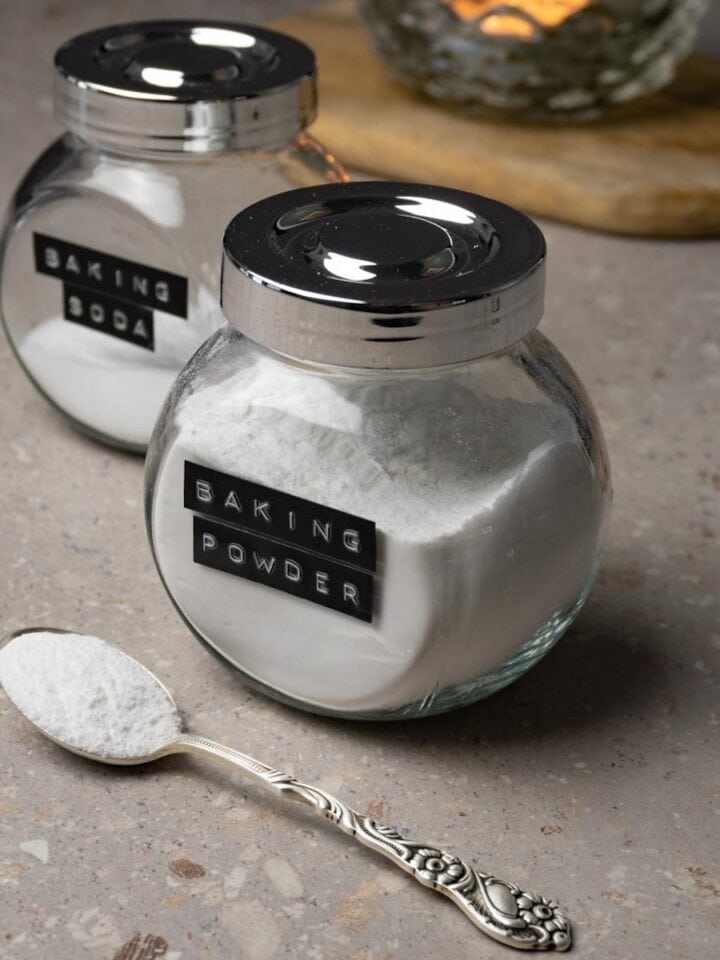In the baking world, yeast is like the secret ingredient that works its magic to make everything rise and taste incredible. Understanding how yeast works can be difficult, but fear not, this post covers everything you need to know about the most common types of yeast and how to use them in baking.

Jump to:
What is yeast?
At its core, yeast is a tiny organism belonging to the fungus family. If we talk about baking, Saccharomyces cerevisiae also known as baker’s yeast or brewer’s yeast steals the spotlight, thanks to its remarkable ability to ferment sugars and produce carbon dioxide gas that is crucial for doughs to rise and expand during baking. This process, known as fermentation, is the secret behind achieving that airy, light texture in bread and other baked goods.
Types of yeast
Active dry yeast
It is produced by drying yeast cells, resulting in coarse granules that need to be rehydrated before use. Active dry yeast typically requires blooming in warm water (not more than 110F/43C, or the yeast will die) with a small amount of sugar to activate it before incorporating it into the dough.
Instant yeast
Instant yeast is the most commonly used yeast in households with a very long shelf life and can be refrigerated or frozen to extend it. This is my favorite type of yeast and I use it for everything from Dinner rolls to no-knead Cranberry walnut bread, to decadent Brioche bread. It’s a more finely ground form of yeast that does not require blooming. It can be added directly to dry ingredients in recipes, making it convenient for home bakers who seek shorter rise times.
Fast acting yeast
Similar to instant yeast, fast-acting yeast, also known as rapid rise yeast or quick rise yeast, is designed to expedite the rising process. A unique formulation of yeast strains allows for quicker fermentation and shorter proofing times. This type of yeast doesn’t require blooming and is best to use in recipes requiring only one rise.
Fresh yeast
Also referred to as cake yeast or compressed yeast, fresh yeast is moist and perishable, requiring refrigeration. It has a high water content and is typically crumbled or dissolved in a liquid (not more than 95F/35C) before being added to dough. Fresh yeast is less common in home baking but is favored by some professional bakers for its reliability, consistent performance, and robust flavor, especially in bread making.
Bread machine yeast
This yeast is specifically formulated for use in bread machines, which often have shorter kneading and rising cycles. It is similar to instant yeast but may have additives to improve its performance in automated baking processes.

Summary: What is the best yeast to use
So, there's no one-size-fits-all when it comes to yeast. It all boils down to what you're baking, how long you want it to rise, etc. Personally, I'm all for instant yeast—it's versatile, stable, and works like a charm for most recipes. Ultimately, selecting the best yeast depends on individual baking needs and preferences. Above, I provide a yeast comparison chart that offers all the information you need to choose the right yeast for your baking project.
Swapping different types of yeast
Replacing one type of yeast with another in a recipe requires a few simple adjustments to ensure successful baking results. If you're substituting active dry yeast for instant yeast, you'll typically need to use about 25% more active dry yeast and proof it in warm water or milk, with a pinch of sugar before adding it to the dough. The reason is that active dry yeast contains 25% fewer active strains than instant yeast.
Conversely, if you're swapping instant yeast for active dry yeast, you should use 25% less instant yeast, and you can skip the proofing step and add the yeast directly to the dry ingredients.
Fresh yeast can also be substituted for active dry or instant yeast. You'll need to use 2-3.5 times the amount (depends on the specific brand of yeast you use, so make sure to check swapping instructions on the packaging or visit the company’s web page for more info) specified in the recipe and crumble it into warm milk or water before incorporating it into the dry ingredients.
What is osmotolerant yeast
Osmotolerant yeast strains such as those found in SAF Gold Instant Yeast are capable of tolerating high concentrations of sugar in the dough, making them ideal for use in sweet baked goods. So, if you’re baking Semlor, Hot cross buns, or Cinnamon rolls, using osmotolerant yeast will make your dough rise more efficiently.
These yeast strains can also ferment efficiently in doughs with low water content, without compromising leavening ability.
Storing and freezing the yeast
To prolong the shelf life of yeast, store it in a cool, dry place away from direct sunlight and moisture. Unopened packages of dry yeast can be stored in the pantry, while opened packages should be sealed tightly and kept in the refrigerator or freezer for long-term storage. Fresh yeast should be refrigerated and used within a few weeks, but it can’t be frozen.
Are there any yeast substitutes
While yeast is the primary leavening agent in most bread recipes, alternative leavening agents such as baking powder or baking soda can be used in certain quick breads or recipes that do not require extended fermentation like this Soda bread. However, it's important to note that these substitutes may produce different textures and flavors compared to yeast-leavened bread.


Leave a comment